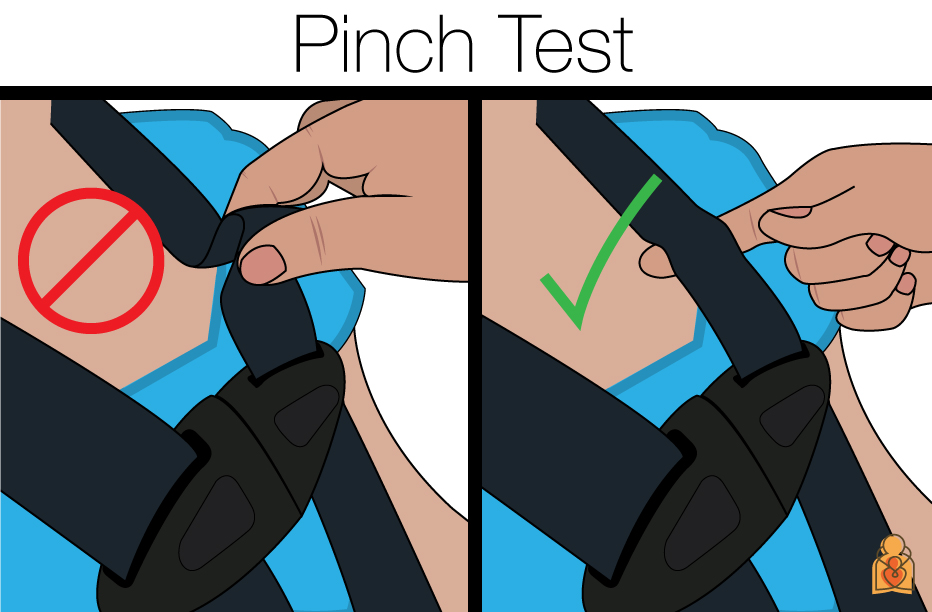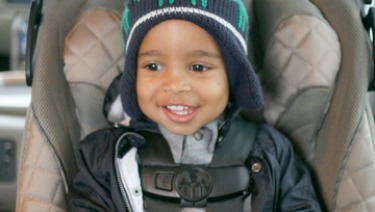Winter Car Seat Safety Tips from the AAP
Winter is a tricky time for car seats. As a general rule, bulky clothing, including winter coats and snowsuits, should not be worn underneath the harness of a car seat.
In a car crash, fluffy padding immediately flattens out from the force, leaving extra space under the harness. A child can then slip through the straps and be thrown from the seat.
These tips from the American Academy of Pediatrics (AAP) will help parents strike that perfect balance between keeping little ones warm as well as safely buckled in their car seats.
How to Keep Your Child Warm and Safe in the Car Seat:
Note: The tips below are appropriate for all ages. In fact, wearing a puffy coat yourself with the seat belt is not a best practice because it adds space between your body and the seat belt.
- Store the carrier portion of infant seats inside the house when not in use. Keeping the seat at room temperature will reduce the loss of the child’s body heat in the car.
- Get an early start. If you’re planning to head out the door with your baby in tow on winter mornings, you need an early start. You have a lot to assemble, and your baby may not be the most cooperative. Plus, driving in wintry conditions will require you to slow down and be extra cautious.
- Dress your child in thin layers. Start with close-fitting layers on the bottom, like tights, leggings, and long-sleeved bodysuits. Then add pants and a warmer top, like a sweater or thermal-knit shirt. Your child can wear a thin fleece jacket over the top. In very cold weather, long underwear is also a warm and safe layering option. As a general rule of thumb, infants should wear one more layer than adults. If you have a hat and a coat on, your infant will probably need a hat, coat, and blanket.
- Don’t forget hats, mittens, and socks or booties. These help keep kids warm without interfering with car seat straps. If your child is a thumb sucker, consider half-gloves with open fingers or keep an extra pair or two of mittens handy — once they get wet they’ll make your child colder rather than warmer.

- Tighten the straps of the car seat harness. Even if your child looks snuggly bundled up in the car seat, multiple layers may make it difficult to tighten the harness enough. If you can pinch the straps of the car seat harness, then it needs to be tightened to fit snugly against your child’s chest. See image right.
- Use a coat or blanket over the straps. You can add a blanket over the top of the harness straps or put your child’s winter coat on backwards (over the buckled harness straps) after he or she is buckled up. Some parents prefer products such as poncho-style coats or jackets that zip down the sides so the back can flip forward over the harness. Keep in mind that the top layer should be removable so your baby doesn’t get too hot after the car warms up.
- Use a car seat cover ONLY if it does not have a layer under the baby. Nothing should ever go underneath your child’s body or between her body and the harness straps. Be sure to leave baby’s face uncovered to avoid trapped air and re-breathing. Many retailers carry car seat bundling products that are not safe to use in a car seat. Just because it’s on the shelf at the store does not mean it is safe!
- Remember, if the item did not come with the car seat, it has not been crash tested and may interfere with the protection provided in a crash. Never use sleeping bag inserts or other stroller accessories in the car seat.
- Pack an emergency bag for your car. Keep extra blankets, dry clothing, hats and gloves, and non-perishable snacks in your car in case of an on-road emergency or your child gets wet on a winter outing.
These precautions can make sure your child is as safe as can be when traveling to their next well-child visit or over the river and through the woods to grandmother’s house.



